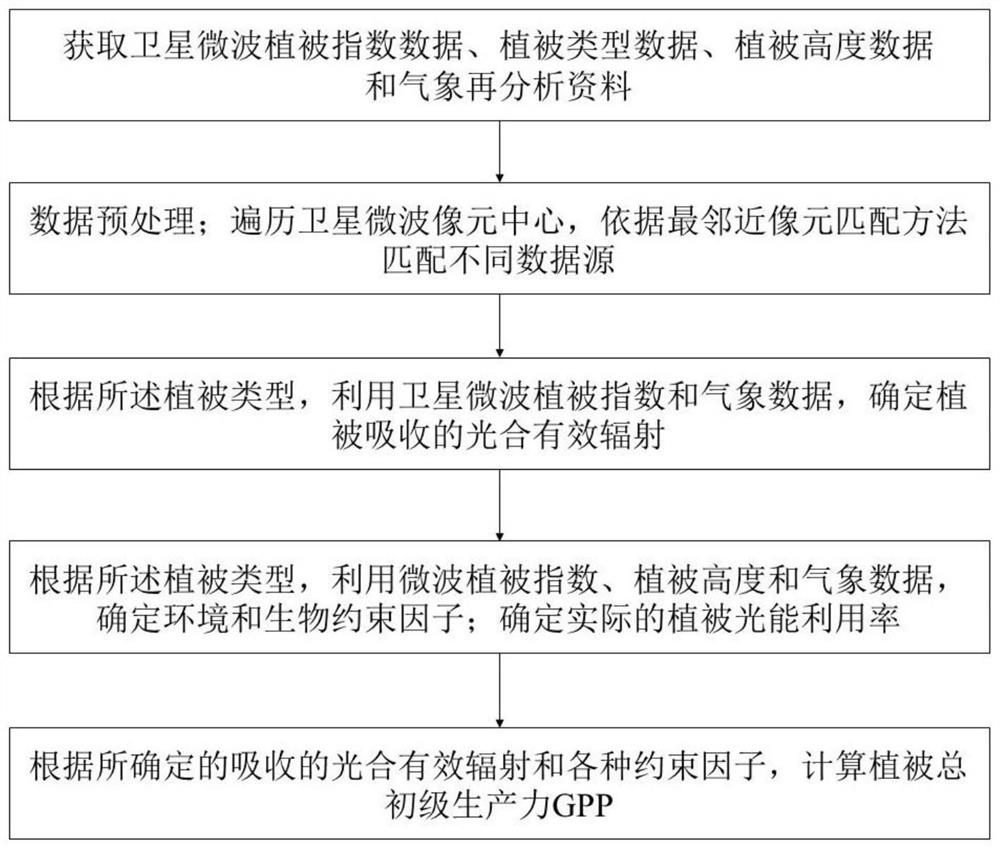Vegetation total primary productivity estimation method based on satellite passive microwave remote sensing
A total primary productivity, passive microwave remote sensing technology, applied in the field of atmospheric remote sensing and ecology, can solve the problem of limited satellite microwave remote sensing, achieve the effect of improving efficiency and avoiding cloud pollution
- Summary
- Abstract
- Description
- Claims
- Application Information
AI Technical Summary
Problems solved by technology
Method used
Image
Examples
Embodiment Construction
[0057] Such as figure 1 As shown, a method for estimating total primary productivity of vegetation based on satellite passive microwave remote sensing is characterized in that: the method includes the steps in the following order:
[0058] (1) Obtain satellite microwave vegetation moisture content index data, vegetation type data, vegetation height data, potential vegetation light energy use efficiency lookup table data and meteorological data, wherein the meteorological data includes solar radiation data and temperature data;
[0059] (2) Perform data preprocessing: traverse satellite microwave pixel centers, and match different data sources according to the spatial nearest pixel matching method;
[0060] (3) Calculate the normalized satellite microwave vegetation water content index according to the vegetation type data and the satellite microwave vegetation water content index data, and combine the solar radiation data to determine the photosynthetically active radiation ab...
PUM
 Login to View More
Login to View More Abstract
Description
Claims
Application Information
 Login to View More
Login to View More - R&D
- Intellectual Property
- Life Sciences
- Materials
- Tech Scout
- Unparalleled Data Quality
- Higher Quality Content
- 60% Fewer Hallucinations
Browse by: Latest US Patents, China's latest patents, Technical Efficacy Thesaurus, Application Domain, Technology Topic, Popular Technical Reports.
© 2025 PatSnap. All rights reserved.Legal|Privacy policy|Modern Slavery Act Transparency Statement|Sitemap|About US| Contact US: help@patsnap.com



